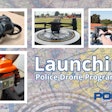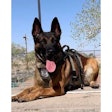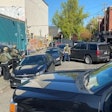A University of Texas at Austin student ran down a street just adjacent to his school on Sept. 28, shooting an AK-47 into the air and into the ground. Only minutes later, he ran into a library on campus where he took his own life.
We now know that the gunman did not want to kill anyone except himself. For the UT Austin administrators and police who were there when the incident was first reported, however, the concern was that it could turn into a mass shooting. The school had experienced one in 1966, where 16 lives were lost and many more individuals were injured. Was this a repeat of that horrible event? Initially, UT Austin administrators and law enforcement officers did not know.
Also, authorities were concerned that the gunman might have had an accomplice who was still on the loose. Campus officials weren't going to take any chances.
Fortunately, law enforcement and university staff and administrators had undergone training, had good working relationships with each other, as well as with other agencies, had appropriate plans, had a layered mass notification system and had a trained student population that was prepared to respond appropriately.
Recent Active Shooter Exercises Prepare Entire Campus
Just a month before the tragedy, UT Austin's police department (UTPD) conducted an active shooter exercise with the Austin Police Department (APD) and Travis County Sheriff. The drill was full-blown, having been conducted in some buildings on campus that were scheduled to be demolished. The drill even involved Simunition training ammunition.
Law enforcement, however, wasn't the only stakeholder that had prepared for an active shooter incident. In August, other university stakeholders participated in a tabletop exercise.
"I worry about what the rest of the campus can do so the chief and his officers can get done what they need to get done," says UT Austin Associate Vice President for Safety and Security Dr. Gerald Robert Harkins. "We've got to make sure we provide our 70,000 people with the best instructions we can."
This means that the students and other office staff are also trained. UT Austin uses the "Shots Fired" video so they will know what to do should an active shooter come on campus.
Another video trains students and staff to know what to look for when a student, employee or faculty member may be at risk for harming themselves or others. The video complements the university's Behavior Concerns Advice Line (BCAL), which allows campus constituents to report at-risk individuals. The line receives approximately 230 calls per semester.
Of course, it helps that UT Austin has a culture on campus that supports safety and security.
"We've done drills on campus, and no one blows them off," says UTPD Chief Robert Dahlstrom. "I think everyone realizes that we'd better practice because it may happen some day. The attitude campus-wide has been 'Now we know what to do. We'll keep having you come back to talk to our groups because we take it seriously.'"
UT Austin maintains this culture by having monthly campus safety and security meetings that involve representatives from all parts of the campus. Additionally, the university tests its emergency communication systems every month, which helps to remind students and staff to keep safety and security top of mind.
Agencies Frequently Work Together at Football Games
On the public safety side of things, every time there is a home football game (that usually has more than 100,000 attendees), UTPD, emergency preparedness, health and safety, facilities, parking/transportation, fire prevention and safety, public affairs, HR, student affairs and many other internal campus stakeholders all work side by side in the command post. External stakeholders, such as APD, Travis County Sheriff, the Austin Fire Department, EMS, FBI, DHS and the Joint Terrorism Task Force, also participate.
"After about seven or eight years and logging about 1,000 hours, you really get to know everyone very well," says UT Austin Director of Emergency Preparedness David Cronk.[PAGEBREAK]
Because internal and external public safety personnel knew each other on a first-name basis, during the Sept. 28 event, the incident command post ran smoothly. According to Dahlstrom, it also helped that egos didn't get in the way.
"I think the biggest key was everyone left their rank at the door," he says. "There were lieutenants telling assistant chiefs 'This is what we need to do,' and they got it done. It wasn't, 'You can't tell me that because you're just a lieutenant or a commander.'"
UTPD's training, as well as its relationships with other law enforcement agencies also paid dividends during the officers' initial pursuit of the gunman.
"On a good day, I have six police officers on campus, and I need more officers than that, so we have to be able to work with these other teams," says Dahlstrom. "The key to that is uniformity and training. That way, you can mix teams and go through a building and everyone knows what you are doing."
Having interoperable radios also helps, according to Harkins.
"We've integrated our radio system with the regional radio system so we can carry the same radios that APD, Travis County Sheriff, the fire department and EMS carry," he says. "We can move to an interoperable frequency."
Provide the Press With the Information They Need
Several best practices were implemented so the school could effectively work with journalists and control rumors, which can cause confusion and sometimes even endanger the public. A joint information center with electrical power, parking and support for TV trucks was set up so university and law enforcement officials could hold press conferences. Harkins notes that the location and handling of the press conferences were also part of the August tabletop exercise.
"During the excitement of the event, you don't have time to say, 'Where can we have a press conference?'" he claims. "We already drilled that and were comfortable with that.
"The hardest thing is the flow of information. I was in Vietnam, and when you are being shot at, the last thing you want to do is radio your boss and tell him or her what's going on. But your boss needs to know, and the public affairs machine needs to get fed. Make sure you get them as much information as possible."
Cronk adds that the media must be told where they should go to get information. "At UT, we have three different corners of the campus where we have joint information centers," he says. "When a press conference is going to be held, a notice goes to the media to go to a specific location."
Lessons Learned: Define Terms, Roles of Non-Security Staff
Although UT Austin's response to the Sept. 28 incident was clearly a success, Harkins notes that there were some lessons he and his fellow administrators learned. Most of the areas of improvement involved definitions of terms and keeping things simple. For example, one confusing term is "shelter in place." Many students and the general public, for that matter, might not know what it means.
"Each year, at least 25 percent of the population is new again," says Harkins. "You've got to go back and make sure everyone understands your words."
Clarity is also important when defining the roles non-public safety personnel must play when an incident occurs.
"I need to know the five things you did in your office when you found out about this event," Harkins asked participants in his August tabletop exercise. "What is facilities going to do? What is parking and traffic going to do?"
Harkins claims the sharing of this information among the participants contributed to the effective campus response.
Dahlstrom agrees saying, "People were doing the right things at the right time and were a big help. We had a parking transportation kiosk guard who saw the gunman go by, and the guard started grabbing students and putting them in the building. I couldn't have asked him to do anything different. There were responses like that all around."
Dalhstrom is quick to point out, however, that the university was lucky that the gunman was not homicidal.
"We were very fortunate," he says. "Still, it was a tragedy. We lost a student, and parents lost a son. But it was a campus-wide success. It could have been a lot worse."
Editor's note: This article appeared in the November/December 2010 issue of Campus Safety, a sister publication of Police Magazine.















